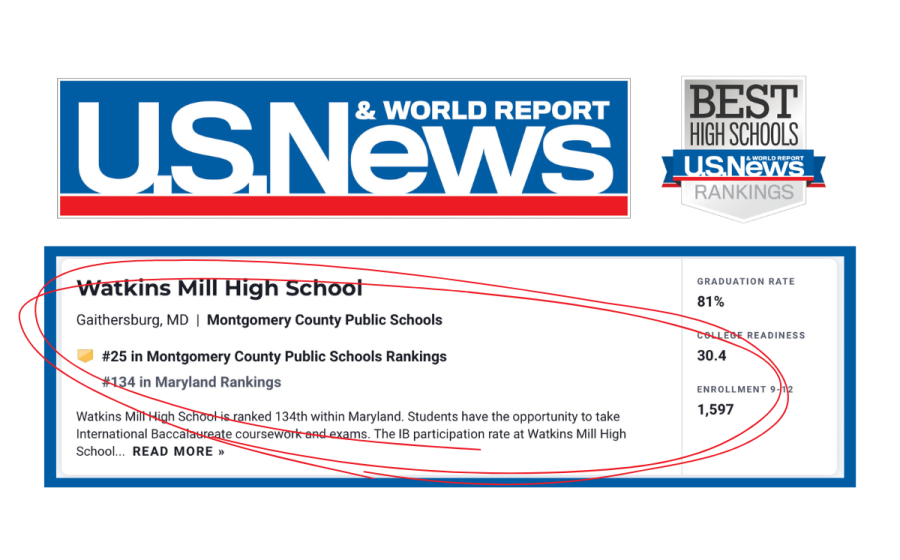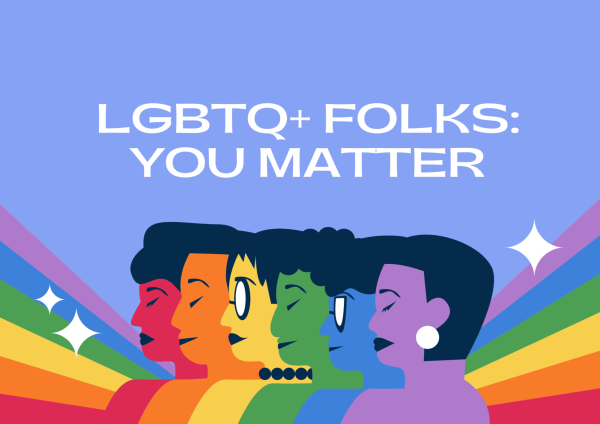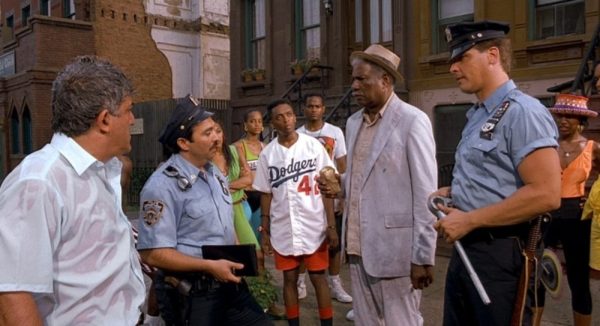US News & World Report High School Rankings is not suitable for analyzing a school like Watkins Mill (Part 2)
Watkins Mill is ranked last in US News and World Report.
In my previous article, I outlined the inner workings of the US News high school rankings. In this article, I want to lay out the insufficiency of the current ranking system in evaluating a school like Watkins Mill.
Watkins Mill’s low ranking as a result of low test scores and participation in IB and AP classes is expected. We have higher rates of first-generation students, English-learning students or students for whom English was a second language, and students from low-income families. Having parents who are fluent in English, can communicate with teachers and closely monitor their child’s progress, can hire extra support for their students, and have the financial stability to guarantee their child’s attendance in college is a reality for few students at Watkins Mill.
The 10% of the rankings that are based on graduation rate highlight another imbalance. Gladwell’s episode acknowledges this discrepancy within minority schools and predominately white institutions. Dillard University’s President, Walter Kimbrough, mentions how Dillard’s 50% graduation rate is quite impressive given that the average family income for students is just over 30,000.
As Gladwell articulates, “Graduation rates don’t tell you how good a school is, they tell you what kind of students a school is admitting.” Graduation rates are almost always defined by a student’s financial situation and home-life, making them a better indicator of a school’s demographic than the quality of the education provided.
Two of the 6 categories listed take into account the proportion of students that are Black, Hispanic, and or low income students. The State Assessment Performance ranking and Underserved Student Performance rankings rank schools based on their test scores in comparison with US News’ predicted model and the performance of other underserved students in the state.
But even if the bar for standardized tests is accommodated to a school’s average family income and demographic, it is important to reflect on whether test scores are a worthwhile measurement of the schools qualities.
Kimberly Noble, a professor of neuroscience at Columbia University, researches how socioeconomic inequalities impact early brain development.
In an interview with NPR’s TED radio hour, Noble says she has seen dramatic differences in school readiness (early literacy and math skills) between low-income and high-income students.
She claims that “And in many cases, these disparities in child development emerge early, well before the start of formal schooling – sometimes when kids are just toddlers. And so, I would argue school is very important, but if we’re focusing all of our policy efforts on formal schooling, we’re probably starting too late.”
Noble describes the impact of these disparities, saying “The gap doesn’t ever really narrow and in some cases may widen, which of course leads to differences in high school achievement, high school graduation rates, college attendance rates and ultimately employment.”
US News’s use of standardized test scores in their rankings penalizes schools for conditions they have minimal control over while simultaneously not recognizing when schools go above and beyond to alleviate such conditions anyway.
What would Watkins Mills’ rankings look like based on a different set of factors. What if the rankings accounted for the number of students who were the first to graduate high school or attend college in their family? What if it acknowledged the school’s investment in job readiness immediately after graduation? What if it based it on the scholarship earned, the health services provided, the uplifting of culture, and the administrative support of student advocacy?
More importantly, could Watkins Mill move up in rankings while still adequately supporting its current demographic?
Much of Gladwell’s podcast breaks down the “peer review” aspect of the US News College rankings and their implications for HBCUs. While high school rankings have no such score, people’s reactions to Watkins Mill speaks for itself. My dad mentioned I went to Watkins Mill to someone who proceeded to call it a horrible place despite, on further speculation, having little to no contact nor connections to the school.
In 2019 in response to a Blackface scandal at Walt Whitman High School, NBC Washington reported that students said the incident was “isolated” and “does not reflect on the inclusion, the welcoming nature here at Walt Whitman High School.”
When scandals, fights, or incidents happen at other schools, they get to be “isolated.” In contrast, issues at Watkins Mill are seen as the reflection of the entire student body, almost as if our student body is violent by default.
This cannot be separated from Watkins Mill having some of the highest minority populations in the county. Our administration dedicates its time and effort into the empowerment of its students through programs that will never be reflected in the US News rankings, that only support people’s preconceived ideas of what our school is.
The rankings and reputation of Watkins Mill do not match the experiences of the students nor the opinions of teachers and administration. Yet, within it all, our students continue to take pride in their school, participate in clubs, sports and activities, and take advantage of the opportunities in education.
Your donation will support the student journalists of Watkins Mill High School. Your contribution will allow us to purchase equipment and cover our annual website hosting costs.

Andrea “AJ” Gordon is a senior at Watkins Mill High School and Opinion Managing Editor for The Current. She is an IB Diploma student and is a part...














Norm Gordon • Oct 25, 2022 at 1:42 pm
“More importantly, could Watkins Mill move up in rankings while still adequately supporting its current demographic?? Clearly not. How could they? This is the curse of being a majority-minority school in MCPS. No success can ever be recognized or celebrated as long as it is below an externally-defined bar. Thanks for the article, A.J.! Now I’ve got to listen to the Gladwell podcast.